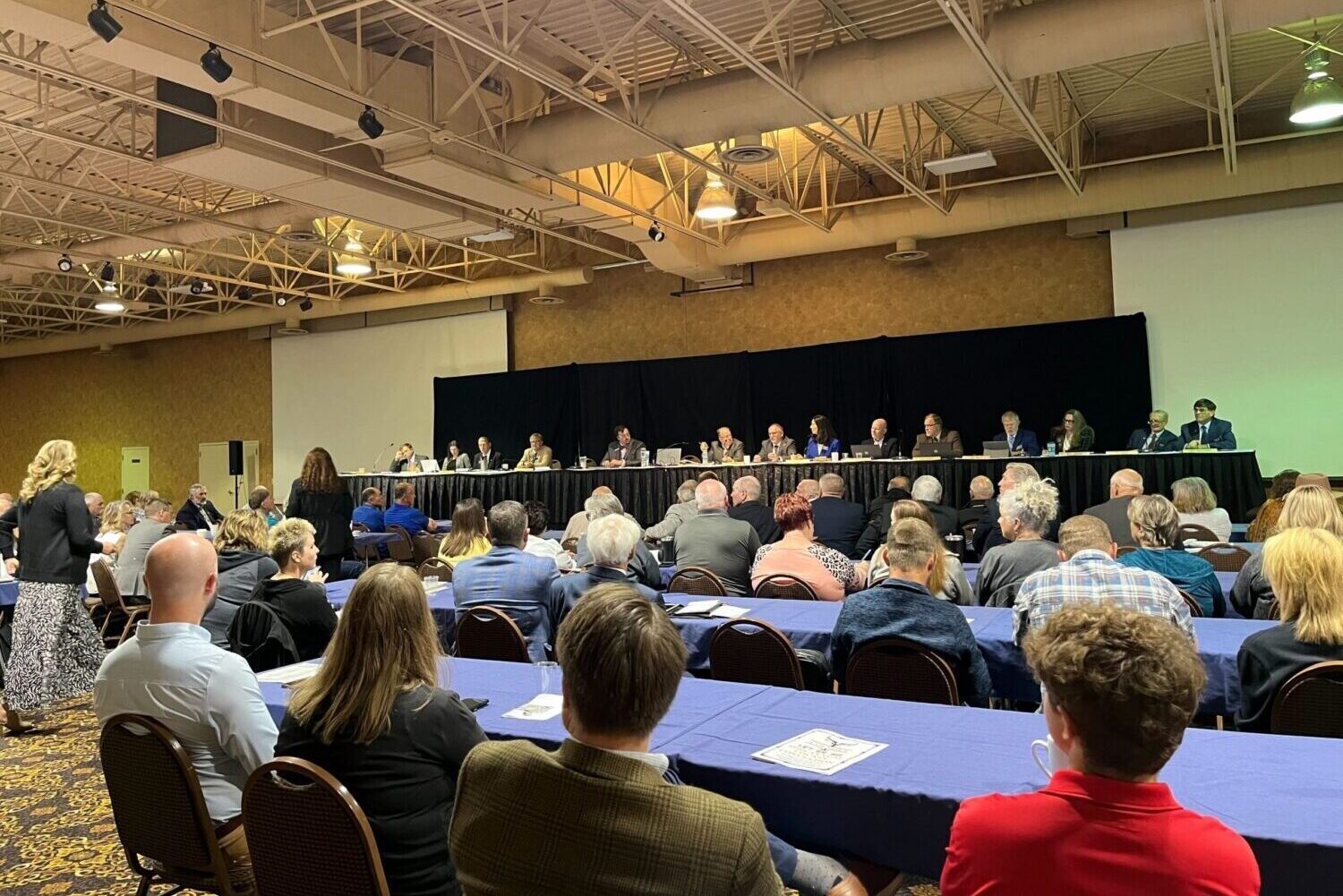
Makenzie Huber/South Dakota Searchlight
Out of 13 recommendations made by the county funding summer study committee — consisting of a dozen lawmakers who dedicated their summer to understanding how to support county governments in the state — a handful have passed into law or are still alive in the Legislature.
Only two bills intended to bolster funding for counties in South Dakota are still in the works — one of them not having come from the summer committee. Five of the committee’s 13 recommendations were never introduced as legislation.
“Any of the bills that required appropriations have really struggled,” Spearfish Republican Sen. Randy Deibert, vice chair of the summer study, told South Dakota Searchlight.
The financial sustainability of counties has been discussed in the Legislature for years, with many of the state’s 66 counties floundering as costs exceed their restrictive budgets and they receive little help from the state.
The summer study was created to focus on ways the state and county governments can partner to deliver services, whether regionalization and consolidation can make counties more efficient, and ways the county funding model could be changed to keep up with costs.
Convincing the state to alleviate some of the financial burden on counties is the long-term goal, Deibert said.
“It’s not a one year fix. It’s going to take several years to get most of these passed with the momentum that they need,” Deibert said. “But I do believe we’ve had a lot of education that’s taken place because of the summer study — especially with the committee members and the word they’re getting out to constituents and fellow legislators about the hardships counties are having and why they’re having it.”
Aside from counties increasing property tax collections according to the percentage increase in property valuations, counties are limited to an additional 3% or inflationary increase, whichever is lower. Meanwhile, counties have rising, uncapped costs associated with inflation and other factors. Some counties are so cash-strapped that they’ve explored bankruptcy in recent years.
Going beyond those statutory limits requires a decision to opt out of them, which voters can reject.
“Counties are already tightening their belts and limiting services because they’re forced to,” Deibert told South Dakota Searchlight. “Opting out is not an option for most counties because voters won’t participate. So, I think some education has come out of our summer study but there still needs to be more.”

The remaining bills in play connected to the summer study recommendations include a bill that would create a statewide public defender office, including a $3 million appropriation to reimburse counties for current indigent defense costs, and a bill allocating $7 million toward cybersecurity efforts for counties and cities.
Public defender office would save counties $2.1M, offer $3M in reimbursements
Counties are currently responsible for the criminal defense costs of accused people who can’t afford an attorney.
A bill creating a statewide public defender office would reduce that burden. It was a product of a Unified Judicial System task force last year.
The new office would cost the state $1.4 million annually but could save counties an estimated $2.1 million.
The office, which is in the governor’s recommended budget, would take over criminal appeals; “habeas corpus” appeals, which are filed to challenge a suspect’s detention; and child abuse and neglect appeals.. The effort passed through the Senate unanimously after being amended to include $3 million in one-time funds to reimburse counties currently covering indigent defendants.

The idea for additional money came from another bill, which was recommended by the county funding committee and failed earlier in the legislative session. It would have created an additional funding source for the office by using the state’s alcohol tax. The bill would have reimbursed counties annually for indigent legal defenses that weren’t covered by the statewide office.
A commissioner for Yankton County told the Joint Appropriations Committee that counties see an increasing number of cases and expenses for indigent defendants. The county budgeted $500,000 for indigent defense costs this year and is expecting to exceed that cost.
The public defender bill now waits for the House of Representatives to approve of the $3 million amendment.
$7M for cybersecurity support
Cybersecurity for local governments is one of the top non-governor-budgeted topics for both the House and the Senate Republican caucuses.
It’s been a hot topic for years as local governments face cybersecurity threats without proper training or equipment to defend themselves and the taxpayer money and information they’re entrusted with.
A bill introduced by Senate Majority Leader Casey Crabtree, R-Madison, would allocate $7 million to strengthen cybersecurity needs for local governments.

The amount would cover the development of a centralized email system, similar to the K-12 school email system. Leftover funds could be used to strengthen the state’s Project Boundary Fence program, where cybersecurity experts from Dakota State University test local governments’ cybersecurity and offer recommendations to better protect themselves. Crabtree said the money could be used to fulfill some of the recommendations suggested by the program.
“This provides a needed feature for the taxpayer but at a more efficient rate” than simply disbursing grants to all of South Dakota’s 66 counties, which was the summer study group’s original plan, Crabtree said.
The $7 million price tag is roughly what South Dakota would have received from the federal government over the last three years if South Dakota had enrolled in a federal grant program aimed at bolstering local government cybersecurity, Deibert told South Dakota Searchlight. South Dakota is the lone state in the nation not participating in the program, with Gov. Kristi Noem’s administration saying there were too many strings attached to the offer.
Local governments would pay for the ongoing costs of the centralized email system.
The bill was unanimously approved by the Joint Committee on Appropriations, and it’ll head to the House floor next.
